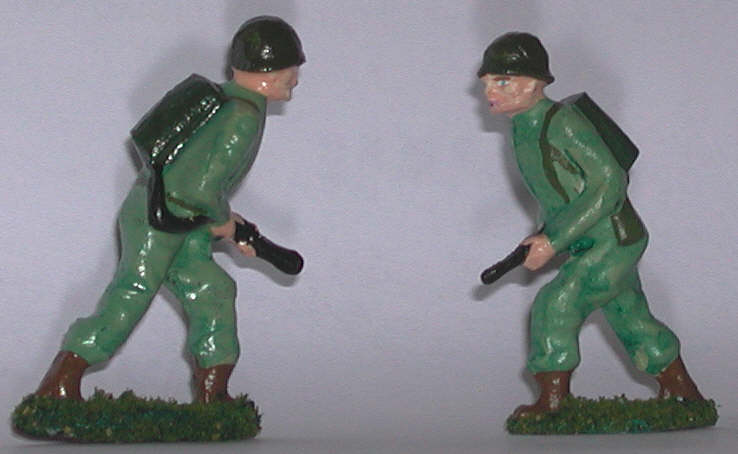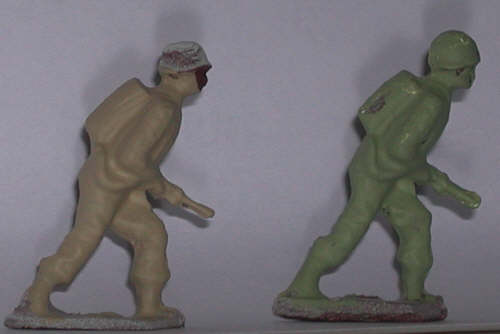
Copyright 2008 All Rights Reserved
The Flamethrower Guy gets a Makeover

The flamethrower soldier in this mold is a curiosity. He looks like an American G.I. but a closer look shows that his helmet's rim is much more obvious. The helmet also has an oversized look to it. Could he have been converted from another figure? His flamethrower tank is more similar to early German rather than Allied models. I wonder if he did not originate as a World War I Prussian. Either he was converted from one, or the sculptor changed his mind in midstream.
The straight nozzle was used by many countries, especially the Germans. The earliest American flamethrowers of World War II also had the straight type nozzle, though later versions has a nozzle with handles.
This figure is crude by the standards of serious military miniature collectors. Though a "toy" soldier, he has many worthwhile attributes. His proportions are correct, and his pose is well-animated. The sculptor did not over play his hand with the pose. He looks as if he is moving naturally and realistically. Not too much dash, yet definitely an action pose.
Using techniques of Toy Soldier Art, we can turn our G.I. flamethrower man to other figures.
Look at the photo. This figure is very crude. Much of the conversion can be done with paint. The short boot can be painted as a shorter boot with a legging. Without touching the foot or leg, we can replicate the footwear of the Afrika Korps and late-war Germans.
The other thing is the helmet. The flange rim is pronounced enough that skillful filing could render us a German steel helmet. All we have to do is file the sides above the flanged rim, and then file the top to a flatter profile. .

The photo here shows the basic profile of the American as compared to the filed helmet for the German. We have filed the sides to accentuate the flamed rim, and we have flattened the top. When filing, remember that viewed from the top, the German helmet's shape is more elliptical while the American is more circular.

|
Here we have painted the German a light tan,and then given him a wash with a darker, yellowish tan. The color we used was called Honeycomb by FolkArt. |
Our American G.I,. was painted a 'Eucalyptus Green" by Delta Ceramcoat. He was given a wash of teal green. This has a soft effect that is part "toy", part realism. |
Contact Us at thortrains@comcast.net